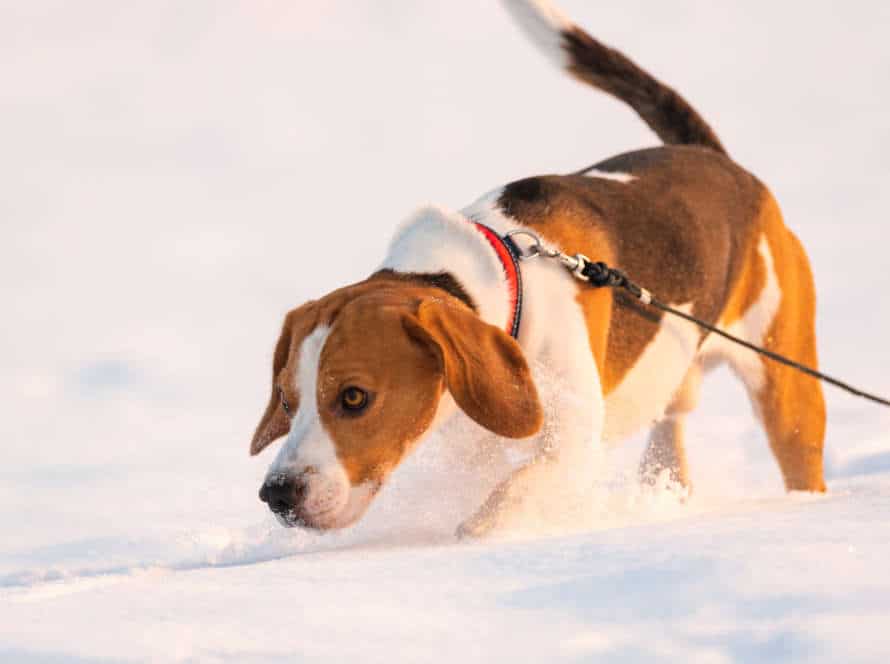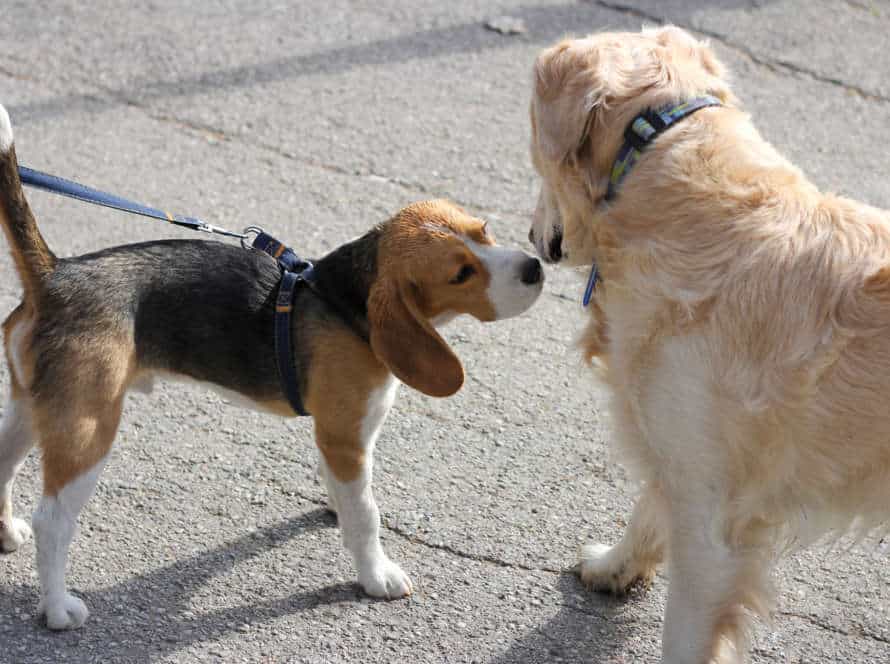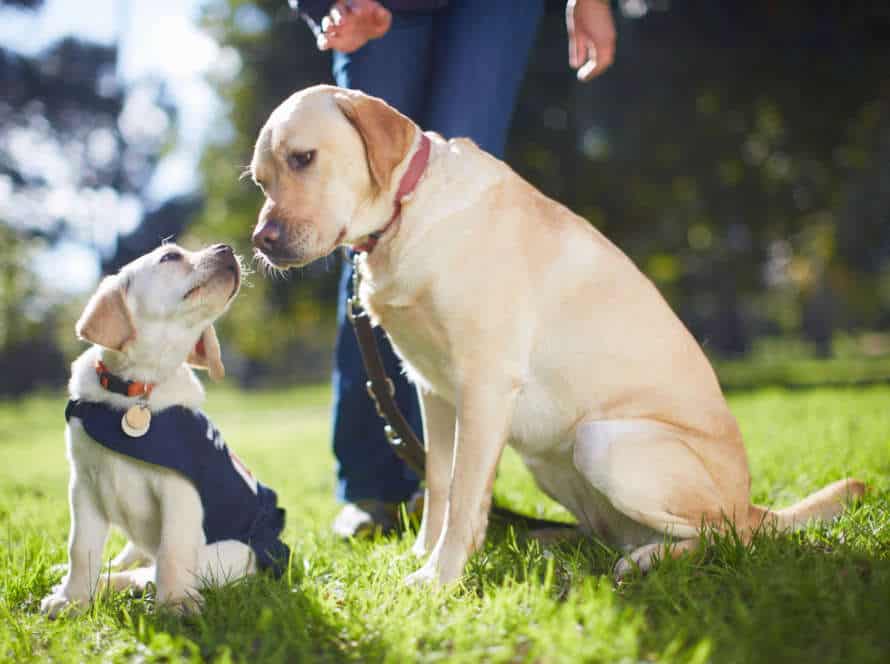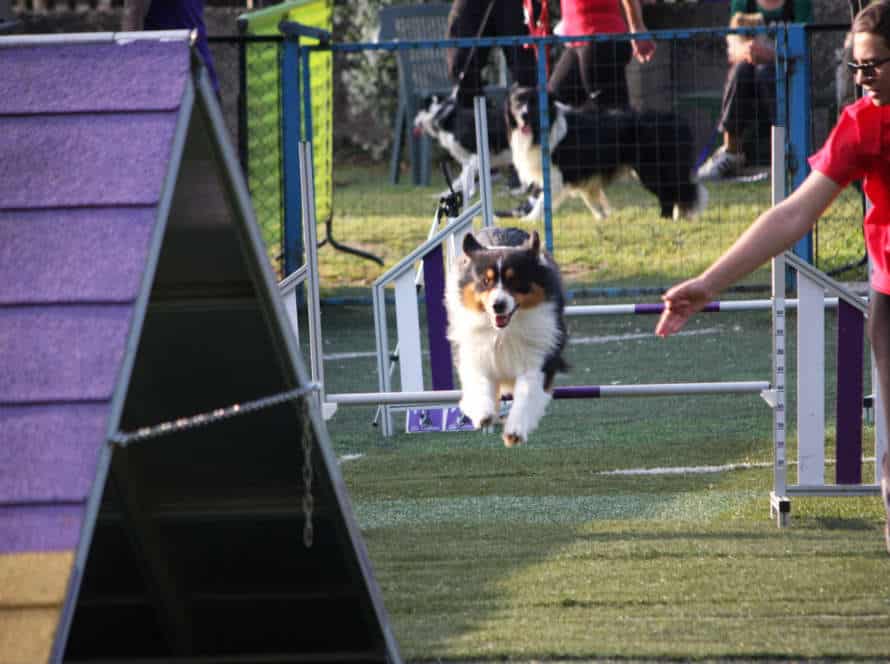Puppy Playtime: Introducing Interactive Games to Young Dogs
Introducing interactive games to young dogs is a great way to promote healthy physical and mental development. Plus, it strengthens the bond between you and your pup. Here are some ideas:
- Hide and Seek: Hide their favorite toy, treat, or you. Encourage them to sniff it out.
- Fetch: Throw a ball, toy, or frisbee. This promotes physical exercise, obedience, and playfulness.
- Puzzle Toys: These dispense treats or require a problem to be solved. Stimulates their minds and encourages problem-solving skills.
- Tug of War: Develops strength and coordination. Plus, it’s an awesome bonding opportunity and a chance for positive reinforcement.
Remember to supervise, use positive reinforcement, and prioritize safety.
The Importance of Interactive Games for Puppies
Introducing interactive games to puppies is essential for their growth. Games help pups learn and use skills in a fun way. They also help them build confidence. Plus, they aid mental and physical development. So why are interactive games so important for young dogs? Let’s find out!
Benefits of Interactive Playtime
Interactive playtime is essential for a puppy’s growth. It provides physical activity, mental stimulation, and socialization chances. Puppies that take part in interactive playtime are much less likely to have destructive habits, separation anxiety, or aggression.
Here are some advantages of interactive playtime:
- Physical Exercise: It encourages puppies to move and use up energy, keeping them fit and healthy.
- Mental Stimulation: Games like hide-and-seek or puzzle toys stimulate a puppy’s mind, improving their cognitive abilities and problem-solving skills.
- Socialization: Playtime with other puppies or humans helps young dogs learn the correct behaviors and communication techniques, reducing the risk of aggression and fear-based behavior.
Pro Tip: Supervise interactive playtime to avoid over-stimulation or exhaustion and ensure safety. Praise and give treats for positive behavior.
Importance of Mental Stimulation Through Playtime
Playtime’s essential for a young pup’s mental stimulation and health. Interactive games help pups express their instincts, learn and make emotional connections with their owners. Here are the benefits:
- Socialize and bond with owners and other puppies.
- Mental and physical exercise, which is vital for development and wellness.
- Problem-solving and decision-making skills they’ll use all their life.
- Avoid destructive behavior and boredom.
As a pet owner, ensure your pup has enough interactive playtime. Pro tip: Use different toys and games to keep them engaged and interested.
Socialization Benefits Through Playtime
Socialization is key in a puppy’s growth. Playtime is one of the greatest methods to foster this. Interactive games for puppies can help them with new experiences and self-assurance, promoting good behaviors. Here are the advantages of interactive puppy games:
- Socialization – These games let puppies connect with their owners and other puppies, aiding in their socialization.
- Physical and mental growth – Playing helps young dogs with coordination, agility, and mental awareness.
- Prevention of bad behaviors – Dogs that are engaged in interactive games are less likely to be destructive, like chewing and excessive barking.
- Stronger connection – Interactive games can make a stronger bond between pups and owners.
It’s important to start puppies with interactive games early to make sure they are properly socialized and behave positively. Pro tip: Vary the games, like fetch, tug of war, and puzzles.
Types of Interactive Games for Puppies
Interactive games for puppies? A great way to train! These games help puppies bond with their owners, give them mental and physical stimulation, and teach basics like obedience and socialization.
What types of interactive games do puppies like? Fetch, hide-and-seek, and nose work games are some examples. Let’s explore these fun, interactive games for puppies!
Puzzle Toys and Feeders for Mental Stimulation
Puzzle toys and feeders are excellent for stimulating your puppy’s mind. They encourage activity and competition. Here are some interactive games you can introduce to your pup:
- Kong Toy: A hollow center to be filled with food, this toy is a great way for your pup to release energy and reduce anxiety.
- Treat Dispensing Ball: These tough balls have a hollow core and when rolled around, treats come out. Perfect for beating boredom!
- Snuffle Mat: This mat has long fibers that act as an ideal hiding place for treats. It makes mealtime more fun by slowing down their eating and encourages release of their feed-finding instincts.
Introducing these toys not only develops their minds but also helps promote dental health and improves masticatory function.
Fetch and Tug-of-War for Physical Exercise
Fetch and Tug-of-War are two amazing ways to engage your pup mentally and physically. They can help your pup use up energy, show their natural instincts, and learn obedience and agility.
To play Fetch:
- Choose a soft, lightweight toy.
- Start inside, in a peaceful place.
- Throw it a short distance.
- Urge your pup to get the toy and praise them when they bring it back.
- As they get better, you can make it harder.
- Always supervise your pup during playtime to avoid choking or swallowing.
To play Tug-of-War:
- Select a tough, safe toy.
- Sit on the floor and invite your pup to play by lightly pulling on one end.
- Let them win sometimes to improve their self-esteem and trust.
- After a few minutes, command them to let go of the toy and give a treat as reward.
Hide and Seek Games for Brain Development
Hide and seek games aren’t just for kids. They can promote brain development in puppies too! These games help stimulate their brains and improve cognitive function. Here are some interactive game ideas:
- Find the treats game: Hide treats around the room and let your pup sniff them out.
- Hide and seek: Give hints or verbal cues for your pup to find a person or toy hidden in the house.
- Puzzle games: Get puzzle toys for your pup, or make your own by hiding treats inside objects.
- Fetch: Play fetch with your pup, but vary the throws for them to stay engaged.
Remember to supervise your pup and avoid games that involve aggression. Pro tip: Interactive game time is a great way to bond with your pup and teach them new skills, so have fun and be patient!
Safety Tips for Interactive Playtime with Puppies
Playtime with puppies can be super fun! But, it’s essential to make sure your pup stays safe. Here are some tips for playing and interacting with your puppy safely. Doing this will make sure that your pup has an enjoyable and secure playtime.
Toy Size and Choking Hazards
When playing with pups, toy size and choking hazards are very important. Keep these tips in mind to keep playtime safe:
- Choose toys that fit your pup’s age and breed. Anything too small is a choking hazard.
- Look for durable, non-toxic materials.
- No small parts, strings, or anything chewable and swallowable.
- Always supervise playtime and intervene if your pup begins to tear their toy apart.
- Rotate their toys to keep them engaged and prevent boredom.
By following these guidelines, your pup’s play can be both safe and fun! Pro Tip: Monitor your pup and give them toys that stimulate them mentally and physically.
Supervision and Monitoring During Playtime
Supervising and monitoring your pup during playtime is essential for their safety and good behaviour. Here are some tips:
- Always watch your puppy when they’re playing to stop injuries or accidents. Never leave them alone, especially around small kids or other animals.
- Use interactive games, like puzzles or chew toys, to keep your pup mentally active and happy. Avoid toys that can be easily chewed and swallowed – they can be a choking hazard.
- Set clear rules – like no biting or jumping – and reinforce them consistently.
- Look out for signs of aggression, like growling or excessive biting, and quickly interrupt it with a strong “no” command.
- Keep sessions to 15-20 minutes, so your puppy isn’t overstimulated or exhausted.
- Remember, playtime should be enjoyable for both you and your pup, and a great chance to bond and train.
Proper Introduction and Socialization with Other Playmates
Introducing and socializing your pup with other pups is essential for a healthy playtime experience. Follow these safety tips to keep your puppy safe:
- Gradual Socialization: Introduce your pup slowly, starting with one-on-one with a calm and friendly dog. Use positive reinforcement techniques.
- Supervision: Keep an eye on your pup and other pups. Interrupt any negative behavior quickly, using verbal cues and positive reinforcement.
- Appropriate Toys: Pick toys that are suitable for puppies and avoid swallowable ones. Change the toys regularly to keep your pup interested.
- Time Limits: Keep playtime short to prevent over-excitement or injury.
- Check-ups: Check your pup for any injuries or illnesses, and get veterinary help as needed.
Remember, safety is crucial for playtime with puppies. Pro Tip: Regular training with positive reinforcement helps pups socialize easily and reduces aggressive behavior.
Training Tips for Interactive Playtime with Puppies
Introducing playtime with puppies? Essential! It trains them important skills, like focus and impulse control. Plus, it builds a bond between puppies and owners. Interactive playtime helps puppies understand their environment. Want to make it successful? Here are some tips. This article discusses all the benefits.
Reward-Based Training Techniques
Reward-based techniques are great for training puppies. Reinforce good behavior with treats or verbal praise. Negative behavior is redirected with corrective actions, such as a time-out or a stern “no.” Puppies are receptive to positive reinforcement. They want to please their owners.
For interactive playtime, use a clicker to mark good behavior. Create a designated play area, set clear boundaries, and increase the difficulty as the puppy improves. These techniques help puppies have fun while learning important skills, such as impulse control and obedience, so they become well-behaved adult dogs.
Consistency in Training Routines
Consistency is the secret to effective puppy playtime training routines. Sticking to a routine helps your pup get the most out of playtime and learn important skills for adulthood. Here are some tips to establish consistency:
- Set aside a daily playtime, morning, afternoon, or evening.
- Choose a safe area free from hazards.
- Use interactive toys and games to keep them engaged.
- Incorporate basic obedience training, fetch, or hide-and-seek.
- Be patient and positive.
The more consistent you are, the better results you’ll see. Pro tip: Keep playtime short to prevent fatigue or agitation.
Integration of Commands During Playtime
Make playtime more fun with commands! Integrate them to ensure obedience training while developing your pup’s physical and mental skills. Start simple, like “sit,” “stay,” and “come.” Reward good behavior with treats or praise. Play interactive games like fetch, tug-o-war, or hide and seek. Keep training sessions short and frequent. This builds a bond and prevents burnout. Plus, commands establish communication, improve listening, and promote positive interactions. A combo of fun and training = happy and healthy puppy!
Best Practices for Successful Interactive Playtime with Puppies
A pup brings joy and energy to your home, but you need to prepare for it. Interactive playtime is key for pup development. Here’s how to introduce games to your new pup! Remember: patience and planning are important. Teach your pup healthy behaviours with interactive play. Have fun and get ready for lots of energy!
Scheduling Regular Playtimes
Interactive playtime with your pup is really important for their growth and development. Here are some tips for scheduling regular playtime:
- Set a regular time daily for it, so your pup will know what to expect.
- Keep it short and frequent, about 10-15 minutes multiple times a day, to avoid overstimulation and exhaustion.
- Encourage interactive play like fetching, chasing or hide-and-seek – it helps your puppy learn social skills.
- Use toys that are safe for them to chew, such as rubber, rope or tennis balls.
- Monitor the playtime to make sure your pup is safe and not doing anything destructive or aggressive.
- Always reward your pup at the end with praise, treats or cuddles – it reinforces good behavior.
Pro Tip: Interactive playtime is a great way to bond with your pup and keep them healthy – plus it’s lots of fun!
Proper Toy Maintenance and Replacement
Maintaining toys correctly is vital for a safe and fun playtime with your pups! Here are some top tips to follow:
- Pick toys that are good for your pup’s age and size.
- Look over your pup’s toys to spot any damage or wear and tear.
- Throw out any broken toys right away to stop your pup from choking or swallowing something bad.
- Clean your pup’s toys often to keep them hygienic and germ-free.
- Change up your pup’s toys regularly to keep them interested and avoid boredom.
Remember, toys aren’t just for fun – they are a key part of your pup’s growth and development. Follow these best practices and you can have a great time playing with your pups!
Integrating Interactive Play as Part of a Healthy Lifestyle
Interactive play is a must for puppies’ healthy lifestyles. Here are some tips for successful interactive playtime with your pup:
- Create a safe and comfy play area. Pick an enclosed space for your puppy to run, jump, and play without getting hurt or damaging anything.
- Choose the correct toys. Puppies love toys that trigger their natural instincts, e.g., fetch toys, tug-of-war toys, and treat-dispensing toys.
- Keep play sessions short. Puppies have short attention spans and can easily become overstimulated. Have multiple short play sessions throughout the day instead of one long one.
- Use positive reinforcement. Reward your puppy with treats, praise, and play when they show positive behaviors, like bringing back a toy or sitting when asked.
- Monitor behavior. Check on your puppy during playtime to make sure they stay safe and active. If they become aggressive or too excited, take a break and switch their attention to another toy or activity.
Pro tip: Incorporating interactive play into your pup’s daily routine gives them exercise and mental stimulation, plus builds a strong bond between you and your furry friend.
Frequently Asked Questions
1. What are some interactive games that are good for young dogs?
Some interactive games that are good for young dogs include hide-and-seek, tug-of-war, fetch, and puzzle toys.
2. How can interactive games benefit young dogs?
Interactive games can benefit young dogs by providing mental and physical stimulation, promoting socialization and bonding, and helping with behavioral issues such as chewing and digging.
3. Is it okay to play rough with my puppy during interactive games?
No, it is not okay to play rough with your puppy during interactive games. Rough play can lead to aggressive behavior and can harm your puppy’s physical and emotional well-being.
4. How often should I play interactive games with my young dog?
You should play interactive games with your young dog daily, for at least 20-30 minutes. This will help keep them mentally and physically stimulated, and will strengthen the bond between you and your puppy.
5. What do I do if my young dog loses interest in a game?
If your young dog loses interest in a game, try switching to a new game or taking a break. It’s important not to force your puppy to play, as this can lead to avoidance or negative behavior towards the game.
6. Can I use food as a reward during interactive games?
Yes, you can use food as a reward during interactive games. This can be especially effective for puzzle toys, as it encourages your puppy to work for their food and can help with slowing down eating habits.







